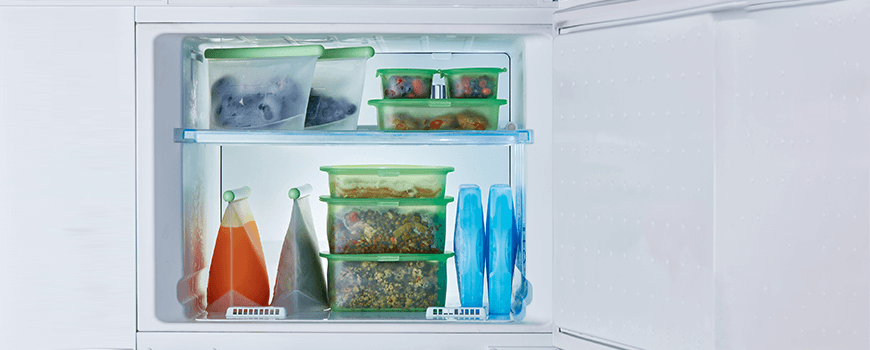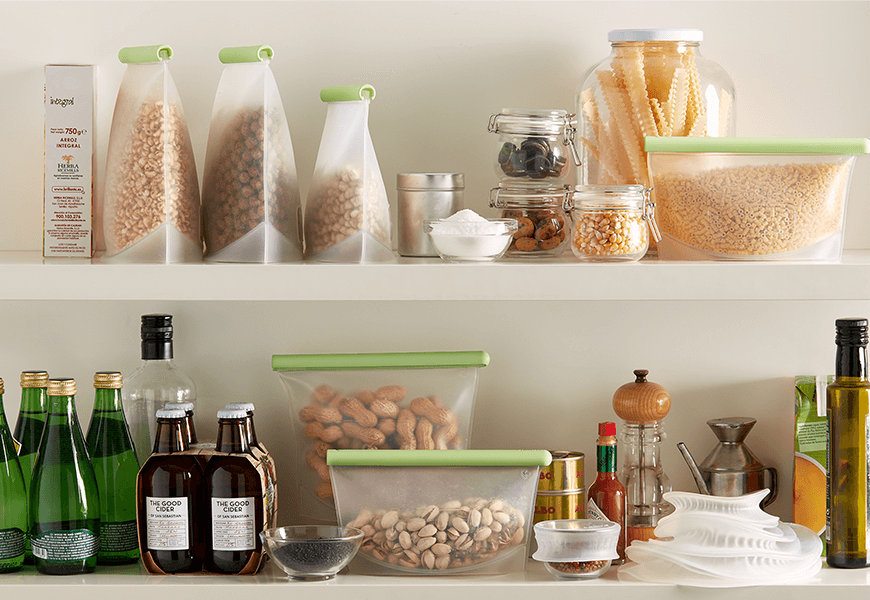Product successfully added to your shopping cart
There are 0 items in your cart. There is 1 item in your cart.
Last blog articles
A Musical Christmas: Classics and Jazz to Celebrate with the Family -
How to Cut Cheese and Create the Perfect Cheese Board for Your Christmas Table -
Celebrate and Offer - Christmas gift ideas -
Goodwill: The Magic of Christmas in Pieces That Tell Stories -
Hermann Bauer: Christmas Gifts with Tradition and Elegance -
10 ways to preserve food better
Published : 01/28/2023
Categories : Let yourself be Inspired

Do you want to stop food waste in your kitchen?
There are different ways to preserve food at home. Doing it the right way saves you money and considerably extends the longevity of your food, maintaining its nutritional value, texture and flavor.
Discover 10 methods to store food better in your home and thus avoid food waste in your kitchen as much as possible. Check them out.
Organize your fridge efficiently
If you have the habit of storing food randomly in your refrigerator, avoid doing it. The temperature inside this appliance is not homogeneous, so you should regulate the refrigerator temperature to 39,2 ºF (4 °C) and consider the following organization:
Top shelf: cheese, jam, yogurts, cream, mayonnaise, berries, and herbs.
Middle shelf: delicatessen, open canned food, and pastry products.
Top shelf above the drawer: raw meat, fish and seafood, soup, eggs, cooked leftovers, and products for defrosting properly packed in containers that prevent the spillage of liquid resulting from the defrosting process.
Drawer(s): fruit, vegetables, and fresh legumes.
Door: milk, butter, drinks, pickles, and sauces.
Food that you shouldn't put in the fridge: bananas, potatoes, apples, bread, honey, coffee, and avocados.

Preserving fruit and vegetables
Before storing fruit and vegetables, wash and dry them well to prevent bacteria and microbes from getting into the refrigerator. In a suitable container, place the kitchen towel under the fruit/ vegetables so that the water released by the food is absorbed.
If possible, separate fruit and vegetables inside the refrigerator drawer. Fruit produces ethylene, a substance that contributes to ripening. In contact with vegetables, the rotting process is visibly accelerated.
Preserving lettuce
Wash lettuce thoroughly and dry it carefully. Wrap the lettuce leaves in a paper towel and store them in a suitable container. The kitchen paper towel concentrates the moisture so that it doesn't lodge in the lettuce leaves.
Keeping aromatic herbs in the fridge
There are several ways to preserve the longevity of aromatic herbs. They can be stored in a pot or jar upright, with a bit of water and a loose plastic bag on top. Alternatively, wash the herbs, remove any remaining soil and dry thoroughly. Place them in a container lined with paper towel underneath and on top of the herbs.
Saving leftovers
Let leftovers cool at room temperature for no more than two hours before storing in the refrigerator or freezer. Store leftovers in individual portions to make it easier to reuse.
Storing cold meats in the fridge
Foods such as ham and salami should be stored in an airtight container, preferably with a flexible lid (in silicone) to avoid using disposable plastics as cling film.

Preserving raw food leftovers
Use reusable flexible lids to seal leftover raw foods easily and airtight in the refrigerator, preventing odor contamination and prolonging their freshness. These reusable lids adjust to different diameters and are perfect for use on containers, tins and fruit and vegetable halves.

Freezing food
Keep the freezer at - 0,4 ºF (-18 °C).
If your freezer tends to form ice, avoid placing food against the walls of the appliance.
Use a drawer for each category: one for meat and fish, another for vegetables, and the last one for desserts, for example.
Identify the food, always write down the freezing date, and eat the oldest items first.
Foods that you shouldn't keep in the freezer: milk, yogurts, potatoes, vegetables to be eaten raw, eggs, and some fruit such as apples and pears (except for red fruits, bananas, and diced mangoes).

Preserving biscuits
Homemade biscuits should be completely cool before storing. Store in a tightly closed glass or plastic container in an area free from moisture and away from light or cleaning products.

Preserving dry groceries
To preserve pre-packaged or bulk dry groceries (pasta, legumes, dried fruit), store in a cool, well-ventilated place, always in order of shelf life: whatever has a shorter shelf life should be put in front of it to be eaten first.
When you cook dried legumes and do not eat them all immediately, keep them in the refrigerator for up to three days, in a closed container.
The fattier nuts (almonds, for example) go rancid easily, so put them in an airtight jar and store in the fridge.
Dehydrated fruit such as figs and sultanas should be packed in a well-sealed container, so they don't dry out.
Put an end to food waste in your kitchen! If you haven't put any of these conservation methods into practice yet, start today. Count on In & Out Cooking to organize and preserve food in the right way and thus adopt a more sustainable lifestyle.
Let yourself be inspired!



